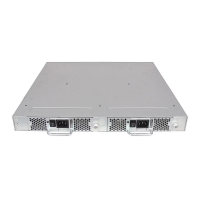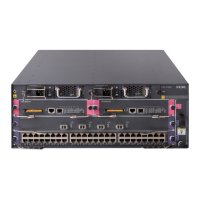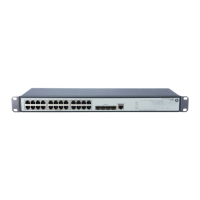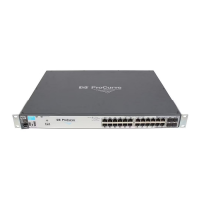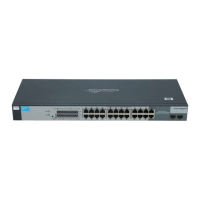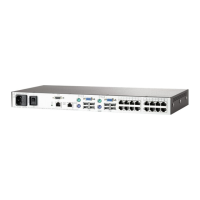28 Fabric OS Administrator’s Guide
53-1002446-01
Domain IDs
2
Synchronizing the local time with an external source
The tsClockServer command accepts multiple server addresses in IPv4, IPv6, or Domain Name
System (DNS) name formats. When multiple NTP server addresses are passed, tsClockServer sets
the first obtainable address as the active NTP server. The rest are stored as backup servers that
can take over if the active NTP server fails. The principal or primary FCS switch synchronizes its
time with the NTP server every 64 seconds.
1. Connect to the switch and log in using an account assigned to the admin role.
2. Enter the tsClockServer command.
switch:admin> tsclockserver "ntp1;ntp2"
In this syntax, ntp1 is the IP address or DNS name of the first NTP server, which the switch
must be able to access. The second variable, ntp2, is the second NTP server and is optional.
The operand “ntp1;ntp2” is optional; by default, this value is LOCL, which uses the local clock
of the principal or primary FCS switch as the clock server.
Example of setting the NTP server
switch:admin> tsclockserver
LOCL
switch:admin> tsclockserver "10.1.2.3"
Example of displaying the NTP server
switch:admin> tsclockserver
10.1.2.3
Example of setting up more than one NTP server using a DNS name
switch:admin> tsclockserver "10.1.2.4;10.1.2.5;ntp.localdomain.net"
Updating Clock Server configuration...done.
Updated with the NTP servers
Changes to the clock server value on the principal or primary FCS switch are propagated to all
switches in the fabric.
Domain IDs
Although domain IDs are assigned dynamically when a switch is enabled, you can change them
manually so that you can control the ID number or resolve a domain ID conflict when you merge
fabrics.
If a switch has a domain ID when it is enabled, and that domain ID conflicts with another switch in
the fabric, the conflict is automatically resolved if the other switch’s domain ID is not persistently
set. The process can take several seconds, during which time traffic is delayed. If both switches
have their domain IDs persistently set, one of them needs to have its domain ID changed to a
domain ID not used within the fabric.
The default domain ID for Brocade switches is 1.
Do not use domain ID 0. The use of this domain ID can cause the switch to reboot continuously.
Avoid changing the domain ID on the FCS switch in secure mode. To minimize down time, change
the domain IDs on the other switches in the fabric.

